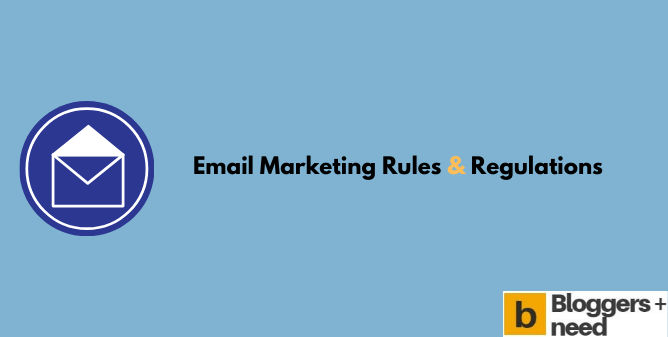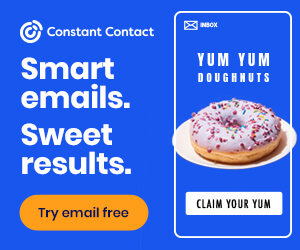
With successful e-mailings, you can reach a large target group with comparatively little personnel and financial effort. In the process, you can increase your sales or raise your profile, for example.
However, email marketing is not something that marketers can just do on the side. It requires a lot of attention, expertise and the will to learn and constantly develop. In general, there are some basic things to keep in mind when putting it into practice. Below you will find 10 direct email marketing rules and regulations for successful mailing.
10 Direct Email Marketing Rules & Regulations
Rule 1 for Successful emailings: Create Strategy and Concept
Creating a strategy and concept is one of the most important basic requirements for the long-term success of your email marketing. Strategy planning can be done either in-house or through an external agency.
Creating a basic strategy is not that difficult. First and foremost, it’s about setting general goals and milestones for email marketing. If you are doing the strategy planning yourself, start by asking yourself the following questions:
- What goal or goals do I want to achieve? (Customer acquisition, customer retention, sales increase, …).
- Which key figures are important and which values do I want to achieve? (new customers, cancellations, turnover, …)
Only when you can answer these questions should you plan the next steps and record them in a concept. This is a concrete schedule for implementing the strategy in day-to-day business. This will help you to plan ahead, act proactively, and successfully achieve the strategic goals and milestones. Ask yourself the following questions:
- Who is the sender of the emailings? (Individual, company, online store, …)
- Who does the sender want to reach? (end customers, business customers, …)
- What are the e-mailings being sent for? (Customer dialog, branding, sales increase, …)
- What incentives are being considered? (Discounts, bonus points, free shipping, gifts, …)
- What should be the content of the e-mailing? (Editorial articles, products, …)
- How often should the recipient(s) be reached? (Daily, weekly, 2-weekly, …)
Read: Best Email Marketing Tools for Startups
Rule 2 for Successful e-mailings: Act Professionally and Seriously
Basically, professional and reputable email marketing means that you have the legally sound and, in case of doubt, verifiable consent of the recipients to receive emailings. You may not write to recipients without this consent! Otherwise, if you violate the email marketing rules, you may face legal sanctions and loss of reputation for your mailing domain, which can have a negative impact on the success of your future e-mailings.
When setting up a mailing list, you must therefore obtain explicit consent from each recipient. The double opt-in procedure has established itself as the only procedure that excludes abuse by third parties. Under certain legally defined conditions (Section 7 (3) UWG), presumed consent can also be assumed, so that explicit consent is not necessary.
An exception is the recording of recipient reactions, such as opening a mailing or clicking on links in a mailing – in this case, the explicit consent of the recipients is always required.
In connection with the consent, the recipient must also be informed about data protection and his or her right to object. The latter information must also be included in every email sent, together with an unsubscribe link and an imprint. If a recipient exercises his or her right of objection by telephone or in writing, you must also take this into account and process it promptly.
Professional and serious e-mail marketing also includes ensuring that the sender of your e-mailings is clearly recognizable to the recipient. A unique sender address also creates trust and can have a positive effect on the opening rate.
Rule 3 for Successful e-mailings: Send Relevant Content
The more relevant your content is to the reader, the more likely they are to engage with it, and ultimately the more successful your email will be.
The selection of the target group plays a decisive role. This should be defined as precisely as possible and then provided with suitable content.
The subject line of the emailing must encourage opening by clearly communicating benefits and addressing the recipient in a personalized way. However, the content should subsequently also deliver what the subject line promises. Overall, the subject line should not be longer than 40 to 50 characters. It should also not contain any spam-suspicious terms.
The content of your e-mailings must meet the expectations of your recipients, be up-to-date and offer added value – for example, exclusive content, coupons, or discounts. This is the only way to make them relevant for the readers and thus ultimately successful.
Rule 4 for Successful e-mailings: Personalize e-mailings
Personalize not only the personal salutation in the subject line and in the introduction but also body text, images, links or entire articles. Almost every element of a newsletter can be personalized, displayed individually or hidden. The same mailing can thus look different for each reader.
Ask recipients when they sign up for the newsletter or through a survey what content they like to read when the optimal time to send is for them, and what sending frequency they want. The ultimate goal in email marketing is to send readers the maximum relevant content at the right time. Mass marketing was yesterday – individual marketing is today!
Rule 5 for Successful e-mailings: Write for the Target Group
Take a structured approach and write in such a way that the reader understands you. Avoid long word constructions and complicated technical terms or foreign words. Sentences should be no longer than 14 to 20 words and grouped in short paragraphs.
Use subheadings to structure your texts. Also, try to address the reader on a personal level and write pictorially and memorably. And most importantly: e-mail marketing is dialog marketing – so ask the reader directly to take action!
Rule 6 for Successful e-mailings: Design Appealingly
Important things belong at the beginning of an e-mailing. Be brief and get to the heart of the message quickly. Highlight buttons and calls-to-action clearly and place them wisely.
Don’t confuse readers with a cluttered newsletter design. Fancy font colors and sizes should only be used as a deliberate stylistic device, and text should always contrast well with the background. Design your e-mailings to match the target pages and your corporate design.
Use emotional images and take into account that readers will follow the eye path of any people pictured. Also, consider how the e-mailing looks with image suppression turned on. Link images and graphics and provide them with meaningful alternative texts.
Optimize the display for mobile devices and test it afterward. Use the pre-header to encourage “on-the-go readers” to open the message. In addition to the sender and subject, the first text lines of the emailing are displayed. In the mobile environment, the pre-header is an important decision-making aid. The recipient weighs up whether to open or delete a mailing.
If you send e-mailings as multipart, recipients can decide whether they prefer to read the HTML or text version. Offer an additional web version so that the emailing can also be viewed in a web browser if necessary.
Rule 7 for Successful e-mailings: Test Before Sending
Before sending the emails, test them on your own email address and on those of your colleagues. Then check according to the dual control principle and set up an editing and approval process.
Test whether the sender address and subject are correct. Check that personalization works with different recipient data. See if all links work correctly and all images display correctly. Display the e-mailing with image suppression switched on and check the alternative texts of the images. Also, make sure that the link tracking and the opening count of the mailing are working correctly. Also, make sure that the landing pages and images linked from the mailing are accessible.
Check your email for spam or phishing-suspicious content, such as euro and exclamation points in the subject line or phrases in CAPITAL LETTERS only. Check that unsubscribe link and masthead are present and that the mailing size is below the recommended 150 KB.
Also, use display tests to test the display on different devices, as it can differ significantly. With eye-tracking, you can analyze the probable eye movement of your readers when viewing the e-mailing in order to further optimize your design.
Rule 8 for Successful e-mailings: Determine the Optimal Time to Send the Message
The optimal sending time varies from mailing list to mailing list and must therefore be determined by you. To do this, collect as much available information as possible about the temporal usage behavior of your target groups and use it to create a temporal usage profile. Also, use the visiting times of your website for this purpose.
Then test different sending times with a split test and thus determine your optimal sending time!
Rule 9 for Successful e-mailings: Master the Technology
Make sure that your web servers can cope with the sudden increase in the number of calls after a mailing and, if necessary, throttle the mailing speed.
Your delivery system should be able to detect and evaluate email openings and clicks on links within them. It should also provide bounce management, which is the automatic processing of e-mail that has not been delivered. The system should also have a system-wide blacklist function. These blacklists ensure absolutely that no emails are sent to certain email addresses.
This could be, for example, competitors who should not receive newsletters, even though they have signed up to receive them. Or if a recipient legally demands an injunction against receiving unsolicited emails. Then it must also be 100 percent ensured that this recipient does not receive any email.
If you send emails via your own mail server, it should be white-listed with the most common mail providers and have its own dispatch domain and IP address. Whitelisting means that you are known to the mail providers as a reputable sender of e-mailings.
If your images/links point to a domain other than the sender domain, make sure that this domain also has a good reputation, i.e. that it is not on a blacklist. In addition, the reputation of the sending domain should be built up slowly and then maintained.
Rule 10 for Successful e-mailings: Learn and Optimize
Evaluate the data after each mailing, try to identify correlations between the content and design of individual emailings and the associated metrics such as open rate, click rate, bounce rate and unsubscribe rate.
Use feedback from your readers and actively solicit it through surveys. Also, respond to criticism from your recipients and constantly develop your e-mailings further.
Email Marketing Rules & Regulations: Conclusion
Professional and successful email marketing is not that difficult if you follow some basic direct email marketing rules and regulations.
First, develop a strategy, then create a concept and always act professionally and seriously. Send your recipients relevant, personalized, and attractively designed content, always focusing on your target group.
Test your emails and send them at the optimal time for your mailing list. Master the technology and learn from your mailings. Don’t stand still – keep moving forward and reach the next level in email marketing!
Affiliate Disclosure: Some of the links in this post are affiliate links, which means I may earn a small commission if you make a purchase through those links. This comes at no extra cost to you. Thank you for your support!


Hello Abdullah Prem. Great article. I like the points you have mentioned while doing email marketing. The essentials you added on your article is good enough to understand and implement also.